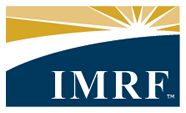IMRF’s current financial status
October 9, 2008
Executive Summary
As of September 30, 2008, we estimate IMRF will be approximately 79% funded at year end. There is time to recover some losses, but we anticipate a loss overall for 2008. Historically, bear markets have been followed by positive returns, e.g., IMRF lost 6.08% in 2001 and 8.72% in 2002, but gained 22.56% in 2003. IMRF is again positioned to participate in the recovery of the domestic and international markets.
We are projecting employer rates will increase approximately 23% in 2010. For example, a 9.27% rate in 2009 would increase to 11.36% in 2010. In October, the Board of Trustees, staff and actuaries will discuss what actions, if any, would be appropriate as rates are set for 2010. For the remainder of this year and through January 2009, I will provide you monthly updates on assets and average projected employer contribution rates.
Given the recent financial developments, it is appropriate to report on IMRF’s current financial status. IMRF’s fiscal year is the same as the calendar year. We began 2008 with $24.151 billion in assets and were 100% funded in the aggregate on a market value basis. As of September 30, 2008, IMRF had $20.6 billion in assets, and it is estimated that it will be approximately 79% funded at year end.
These losses were unprecedented in their rapidity, but not without historic antecedent. The 2000-2002 market decline took IMRF’s funding from 123% on a market basis to 82%. It took four years to reach 100% funding again by year-end 2006.
It is for this reason, among others, that I asked you to contact Congress and support the Emergency Economic Stabilization Act of 2008. I am optimistic that the bailout plan as well as actions taken by the Federal Reserve Board and the U.S. Treasury will begin to return liquidity to the U.S. financial structure. I also know that the financial downturn is beginning to impact local government revenues and that this downturn may be deeper and longer than the last.
In 2008, the average employer contribution rate in the regular plan is 9.47%. Next year, the rate will decline to 9.27%. The decline is due to the five-year smoothing technique applied to rate calculations. (Only 20% of each year’s investment earnings or losses are used.) This drop reflects past investment gains and provides you with a little breathing room before rates trend upward in 2010.
Employer rates for 2010 will be calculated using data available as of December 31, 2008. There is time for IMRF to recover some of its losses, but I anticipate a loss overall for the year. Historically, bear markets have been followed by positive spikes in returns. IMRF lost 6.08% in 2001 and 8.72% in 2002, but gained 22.56% in 2003 (our largest gain in almost 20 years).
IMRF is once again positioned to participate in the recovery of the domestic and international markets. Our professional managers have the liquidity needed to buy into rising markets and are holding securities which will benefit from the upturn.
What the future holds
- Weekly, I receive reports on the value of assets and the potential impact on future employer contribution rates beginning in 2010.
- As of September 30, we are projecting employer rate increases of approximately 23% in 2010. For example, if your rate was 9.27% next year, the rate in the following year would be 11.36%.
- In October, the Board of Trustees, staff and actuaries will review developments and discuss what actions, if any, would be appropriate as rates are set for 2010.
- For the remainder of this year and through January 2009, I will provide you monthly updates on assets and average projected employer contribution rates.
- In April 2009, preliminary employer contribution rates for 2010 will be distributed.
- In April and May, IMRF Chief Financial Officer Richard DeCleene and I will tour the state to discuss IMRF investment returns in 2008 and future employer contribution rates. (This is a practice begun in 2002.) We would encourage you and others (such as financial officers and elected officials) from your unit of government to attend.
- Feel free to contact me (lkosiba@imrf.org) or Richard DeCleene (rdecleene@imrf.org) with any questions, comments or concerns.
In closing, I would like to assure you and your employees that IMRF is fiscally sound. The financial markets have been tough on all investors, but IMRF remains a long-term investor with the discipline and expertise to recover when the markets reverse course and begin building wealth again.

